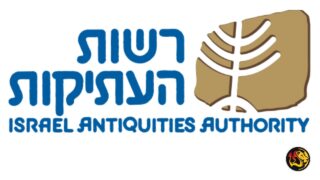Ancient “Redemption of Zion” Coin Unearthed as Israel Prepares to Mourn Destruction of its Temples
by Emmitt Barry, with reporting from Worthy News Jerusalem Bureau Staff

(Worthy News) – Just days before the Jewish people mark the solemn day of Tisha B’Av–the Ninth of Av–a rare bronze coin dating to the final year before the destruction of the Second Temple has been discovered near the Temple Mount. The coin, bearing the stirring inscription “For the Redemption of Zion,” was minted in Jerusalem during the fourth year of the Great Revolt against Rome (69-70 C.E.). Archaeologists view the find as a powerful echo of Jewish longing for deliverance in the face of overwhelming despair.
The discovery was made by the Israel Antiquities Authority (IAA), in collaboration with the City of David and the Jewish Quarter Reconstruction and Development Company. It was uncovered during excavations in the Jerusalem Archaeological Garden, just southwest of the Temple Mount. On one side of the coin is a goblet surrounded by the ancient Hebrew inscription, “LeGe’ulat Zion,” or “For the Redemption of Zion.” The reverse shows a lulav and two etrogs–symbols used in the Sukkot festival–alongside the words “Year Four,” marking the fourth year of the revolt, from spring 69 to spring 70 C.E.
The coin’s discovery days before Tisha B’Av has stirred deep emotions among Israeli archaeologists and leaders. “Two thousand years later, we are privileged to discover this evidence… another moving testimony that our roots here run so deep, they cannot be uprooted,” said Israel’s Minister of Heritage, Rabbi Amichai Eliyahu. Dr. Yuval Baruch, excavation director at the IAA, noted a shift in the inscription from “Freedom” to “Redemption,” signaling the rebels’ transition from hopeful resistance to spiritual yearning as the Roman siege tightened. “It reflects the desperate situation of the rebel forces about six months before the fall of Jerusalem,” he explained.
The Significance of Tisha B’Av
Tisha B’Av—the ninth day of the Hebrew month of Av—is regarded as the most mournful day on the Jewish calendar, marked by centuries of national tragedy and exile. Its sorrowful history begins in the wilderness, when, according to Jewish tradition, the ten spies returned from scouting the Promised Land with a faithless report, declaring it unconquerable due to the giants who lived there. Their unbelief spread fear throughout the camp of Israel, and the people wept that night — establishing the date as a day of calamity for generations to come.
In the centuries that followed, this day became associated with the destruction of both Jewish Temples: the First Temple by the Babylonians in 586 B.C., and the Second Temple by the Romans in 70 A.D. — both events marking devastating turning points in Jewish history. The pattern of sorrow did not end there. According to tradition, the expulsion of Jews from Spain in 1492, as well as the outbreak of World War I in 1914 — which ultimately led to the horrors of the Holocaust—also occurred on or near Tisha B’Av.
Tisha B’Av is thus not only a commemoration of destruction, but also a solemn reminder of the consequences of unbelief and disunity. It remains a national day of mourning, yet within it lies a hope for redemption — a day when brokenness may yet give birth to restoration.
Rediscovering a Cry for Redemption
Excavation leaders Esther Rakow-Mellet, Dr. Filip Vukosavović, and Dr. Yuval Baruch have overseen six seasons of archaeological digs at the site, uncovering structures and artifacts from the Second Temple through the early Islamic Umayyad period. Among the most remarkable findings is this “Year Four” coin, linked to rebel leader Shimon Bar Giora, one of the final commanders resisting Roman forces during Jerusalem’s siege. Researcher Yanniv David Levy emphasized the rarity of such coins, especially in good condition, due to the rebels’ dwindling production capacity in the revolt’s final year.
The symbolic imagery of the Sukkot ritual–the lulav and etrog–evokes themes of pilgrimage, joy, and the unity of the Jewish people before the Temple’s fall. Their presence on the coin, alongside the phrase “For the Redemption of Zion,” reflects both spiritual defiance and desperate longing. It is a prayer cast in bronze, hidden beneath centuries of dust, and now resurfaced as Israel once again sits in remembrance by the ruins of its ancient capital.
This Tisha B’Av, as Israelis gather in the City of David for the reading of Lamentations at the annual “How the Rocks Are Broken” event, the newly uncovered coin stands as a poignant reminder: while stones may be shattered and temples fall, the cry for redemption endures.
As Christians continue to pray for the peace of Jerusalem and for the day when the Jewish people will recognize Yeshua (Jesus) as their Messiah, many around the world will join in solemn intercession during this sacred time. Tisha B’Av becomes not only a day of remembrance for Israel, but also a moment of deep longing shared by believers who await the fulfillment of prophetic hope. With hearts stirred by the echoes of ancient cries and modern discoveries, they anticipate the day when Israel will declare, “Baruch Haba B’Shem Adonai” — Blessed is He who comes in the name of the Lord.
💡 Did you know? One of the best ways you can support Worthy News is by simply leaving a comment and sharing this article.
📢 Social media algorithms push content further when there’s more engagement — so every 👍 like, 💬 comment, and 🔄 share helps more people discover the truth. 🙌
Latest Worthy News
If you are interested in articles produced by Worthy News, please check out our FREE sydication service available to churches or online Christian ministries. To find out more, visit Worthy Plugins.
